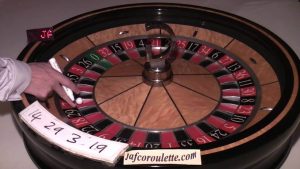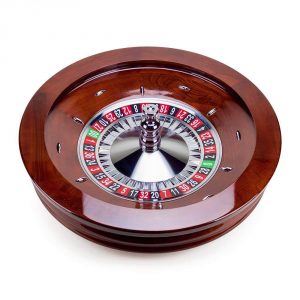
How A Roulette Wheel Is Made
The game of roulette has been around since the late 18th century. Even though today it can be played online with bonus codes such as the Resorts Online casino bonus code 2019, its physical version contains a very intricate mechanism. It was invented in France, but soon spread all across Europe and eventually the US. However, the mechanism used for making a roulette wheel dates back even further, specifically to Blaise Pascal and his attempt to make a perpetual motion machine a century and a half before. Although the mechanism of a roulette wheel seems simple these days, there’s a lot more to it.
Materials Used
 Just like in their early days, most roulette wheel frames today are still made from wood. This is both a reliable material and the one that makes the wheel look classy and vintage. The wood is polished to give it a shiny and smooth look. Mahogany is the most common type of polished wood used. The part of the wheel where the action takes place is made from metal, but if you are going on a venture to make one of your own and not spend a lot of money, you can use plastic as well. There is a metal handle and metal parts that divide each of the numbered fields.
Just like in their early days, most roulette wheel frames today are still made from wood. This is both a reliable material and the one that makes the wheel look classy and vintage. The wood is polished to give it a shiny and smooth look. Mahogany is the most common type of polished wood used. The part of the wheel where the action takes place is made from metal, but if you are going on a venture to make one of your own and not spend a lot of money, you can use plastic as well. There is a metal handle and metal parts that divide each of the numbered fields.
Size Regulations
According to casino regulations, all roulette wheels are 32 inches (80 cm) in diameter. Average roulette wheel weighs around 100 pounds (45 kg). Depending on which version of the game you’re playing, there can be a different number of pockets. French and European roulettes have 37 pockets for numbers 1 through 36, and a 0. An American roulette is similar with the addition of a double zero to the wheel.
The Production Process
After the wooden frame is made, the next steps involve sandblasting and polishing. After that comes the painting. For the most part, the wheel keeps its wooden texture, but the edges and the side of the wheel are sometimes painted, usually black. The metal wheel then comes into place with numbers put accordingly to their positions. The number positions may seem random, but they are actually put in a certain order that ensures balance. The divider pockets are then put on top of the numbers so the ball can only stop at one number at a time. Lastly, the handle is selected and installed at the center of the wheel.

Testing
After its made, every wheel goes through testing. This is to ensure that the wheel is spinning smoothly and that there are no irregularities on it. The pockets are measured so they each have the same space between them. Quality made wheels are really long-lasting. Some of the top manufacturers of roulette wheels make them so they can last for up to a couple of decades before they get worn out.
Rigged Wheels
Yes, there is such a thing as rigged wheels. Some shady casinos want to ensure that the house always has the total edge over the players and that the winning outcomes to players are minimal. These are either made with a set of magnets that can control approximately where the ball lands, or by a small pin that pops out when the croupier pushes the button under the table.
DIY
The production of a roulette wheel requires immaculate precision and the use of professional tools. However, you can make your own wheel from cardboard and plastic and there are some very useful tutorial videos that can be found online on how to do it.
